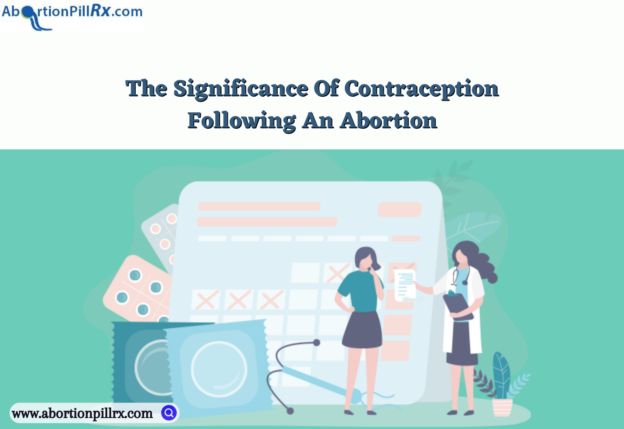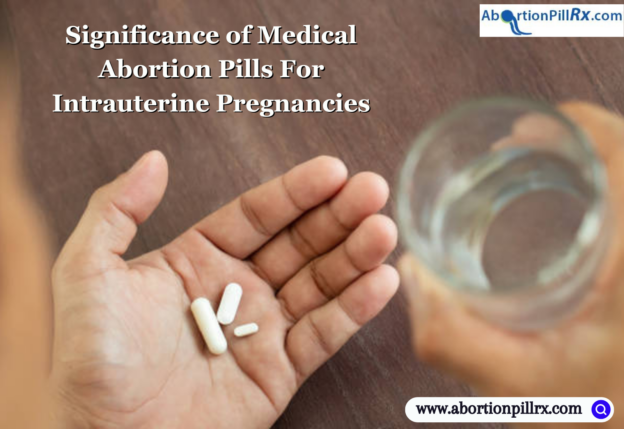Mifepristone is frequently hailed as the key actor in medical abortion and is used to end pregnancies. But for the method to be effective, a number of drugs must be used; it is not a standalone remedy. In this thorough blog article, we explore the nuances of why mifepristone alone is insufficient to remove pregnancy tissue from the uterus and why a two-step procedure with misoprostol is thought to be required for a secure and successful abortion. Here in this article, we will learn about the possibilities of incomplete abortion with mifepristone.
Understanding Mifepristone
Mifepristone plays a crucial role in a two-drug combination used to terminate pregnancies non-surgically. When paired with the second drug, misoprostol, this regimen is commonly referred to as medication abortion or simply “the abortion pill.”
Mifepristone’s primary function is to inhibit the hormone progesterone, which is essential for the sustenance of a pregnancy. By blocking progesterone, it disrupts the pregnancy’s ability to progress.
Misoprostol, on the other hand, complements Mifepristone’s action by inducing uterine contractions. These contractions trigger the body to expel the pregnancy, mimicking a natural miscarriage.
Together, Mifepristone’s effectiveness in abortion along with misoprostol offers a non-invasive method for ending pregnancies, providing individuals with a safe alternative to surgical procedures. This two-drug approach aligns with medical guidelines and is considered a valuable option for those seeking to conclude pregnancies under medical supervision.
The Isolation Of Mifepristone
Why can’t Mifepristone, with its evident ability to diminish the pregnancy’s adhesion to the uterine wall, enough to finish the abortion process by itself is a frequently asked issue. The relationship between Mifepristone and pregnancy is a sensitive one.
The Crucial Role Of Misoprostol
Mifepristone and misoprostol can be used sequentially or separately to perform a medication abortion. The second medicine in the abortion regimen, misoprostol, is essential to the process and so plays a crucial role in selecting the route to take.
Misoprostol is typically given 24 to 48 hours following the first Mifepristone dose. Because Mifepristone may help prepare the uterus by reducing the pregnancy’s adhesion to the uterine wall during this crucial window of time, it is important. Once the abortion-inducing process of priming is begun, misoprostol is added to finish the procedure.
The importance of understanding Misoprostol’s function in the two-step abortion procedure cannot be overstated. Both approaches can be successful, however, because of the higher success rates and dependability they offer in guaranteeing a thorough and safe abortion, Mifepristone and Misoprostol are frequently favored. However, in some situations, misoprostol alone may need to be taken into consideration; finally, the decision is up to personal medical preferences and suggestions.
How Does Misoprostol Work?
Misoprostol, a synthetic prostaglandin analog, has the capacity to cause uterine contractions because it has uterotonic qualities. Simply put, misoprostol induces uterine contractions. The process of removing pregnancy materials from the uterus, which closely resembles a natural miscarriage, depends on these contractions.
Misoprostol causes the uterus to contract, which starts the process of the pregnancy’s tissue being shed. This dynamic phase of the abortion procedure involves shedding, which is frequently accompanied by pain and bleeding. Even though they are unpleasant, these signs and symptoms are essential to the abortion procedure and show that the ejection of pregnancy tissue is happening.
Individuals having a pharmaceutical abortion can better understand the procedure and what to anticipate with regard to symptoms and adverse effects by understanding the processes at work with Misoprostol. It is a crucial step in safely and efficiently ending a pregnancy under medical care, despite the fact that the experience can be difficult.
Relationship Between Mifepristone And Misoprostol
Why are both drugs necessary, then? By lessening the pregnancy’s grip on the uterine wall, mifepristone acts as the first step. This priming process gets the uterus ready for Misoprostol usage later on, making it more efficient. Mifepristone essentially prepares the ground for misoprostol to carry out its function of removing the pregnant tissue.
Taking Care Of Pain And Discomfort
It’s normal to feel uncomfortable as the procedure progresses, including cramping and bleeding. It’s critical to recognize how important pain management is at this stage. A bottle of hot water for application and over-the-counter medications may both significantly reduce discomfort, making the treatment more comfortable.
Seeking Support
Although the procedure for having an abortion is typically well accepted, individual reactions may differ. Some people may have cramps and bleeding for shorter or longer lengths of time. It’s critical to remain knowledgeable about any warning flags. Unusual or unpleasant-smelling discharge and heavy bleeding must be reported right once to a healthcare professional for assessment and advice.
Conclusion
In conclusion, the interaction between Mifepristone and Misoprostol is the fundamental component of a medical abortion. Misoprostol causes contractions to remove the tissue while Mifepristone reduces the pregnancy’s adhesion. This two-step process is secure and efficient, but it’s crucial to strictly follow the advice of your healthcare expert. Any issues should be brought up right away to get the help you need. This strategy provides a helpful choice for individuals who are confidently and carefully handling pregnancy decisions, despite its drawbacks. Both these medications can bought from Abortionpillrx. It is one of the most reliable websites on the internet with good quality pills at affordable prices.




